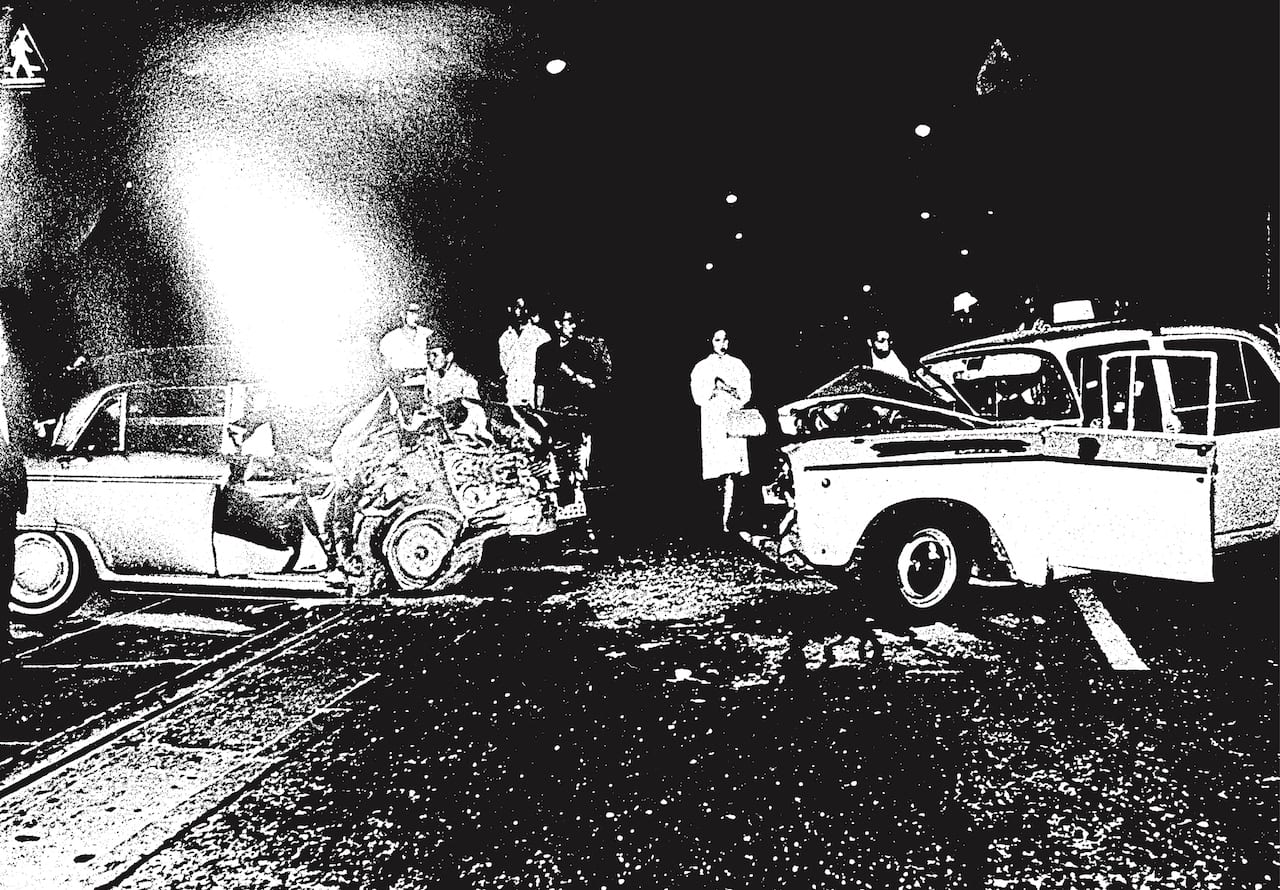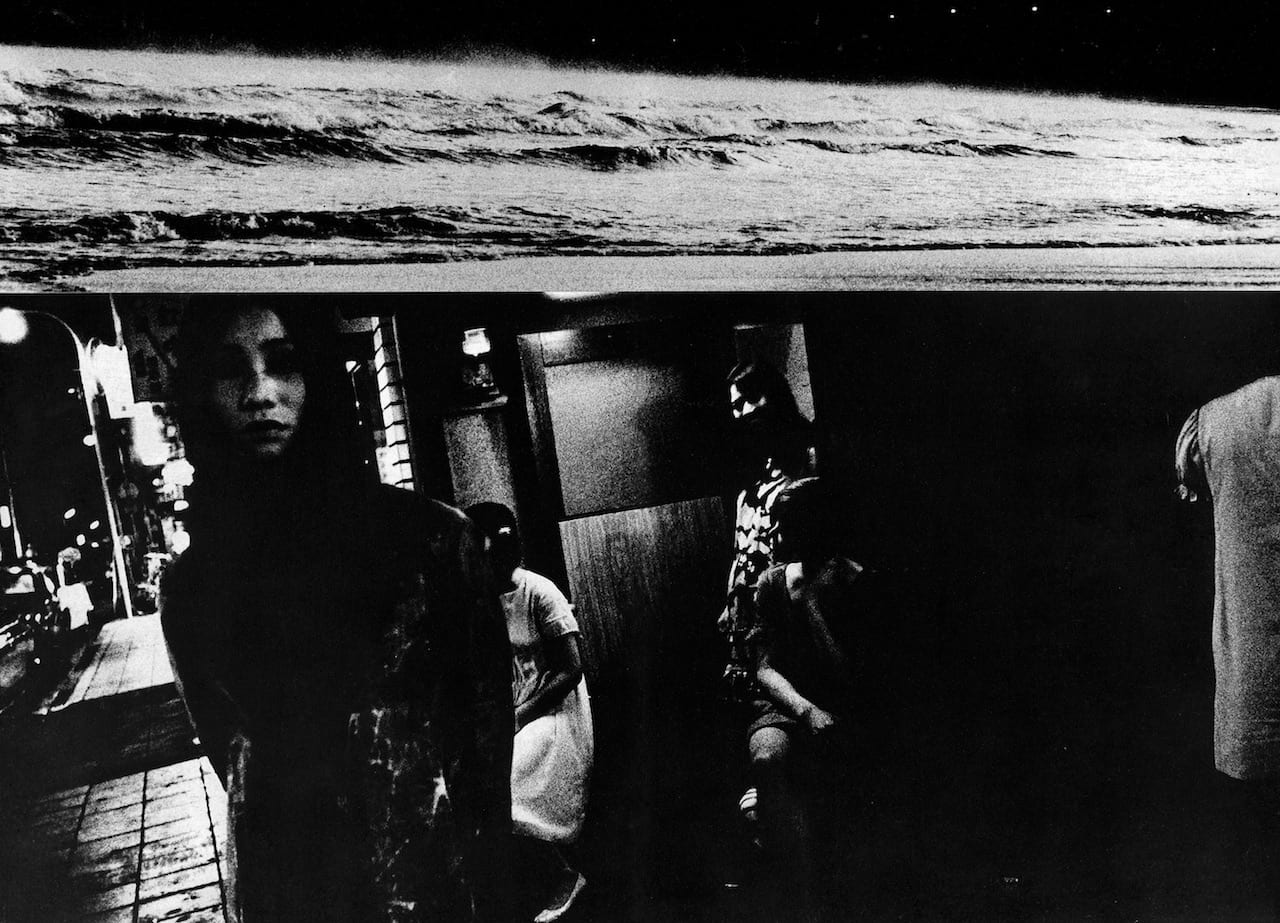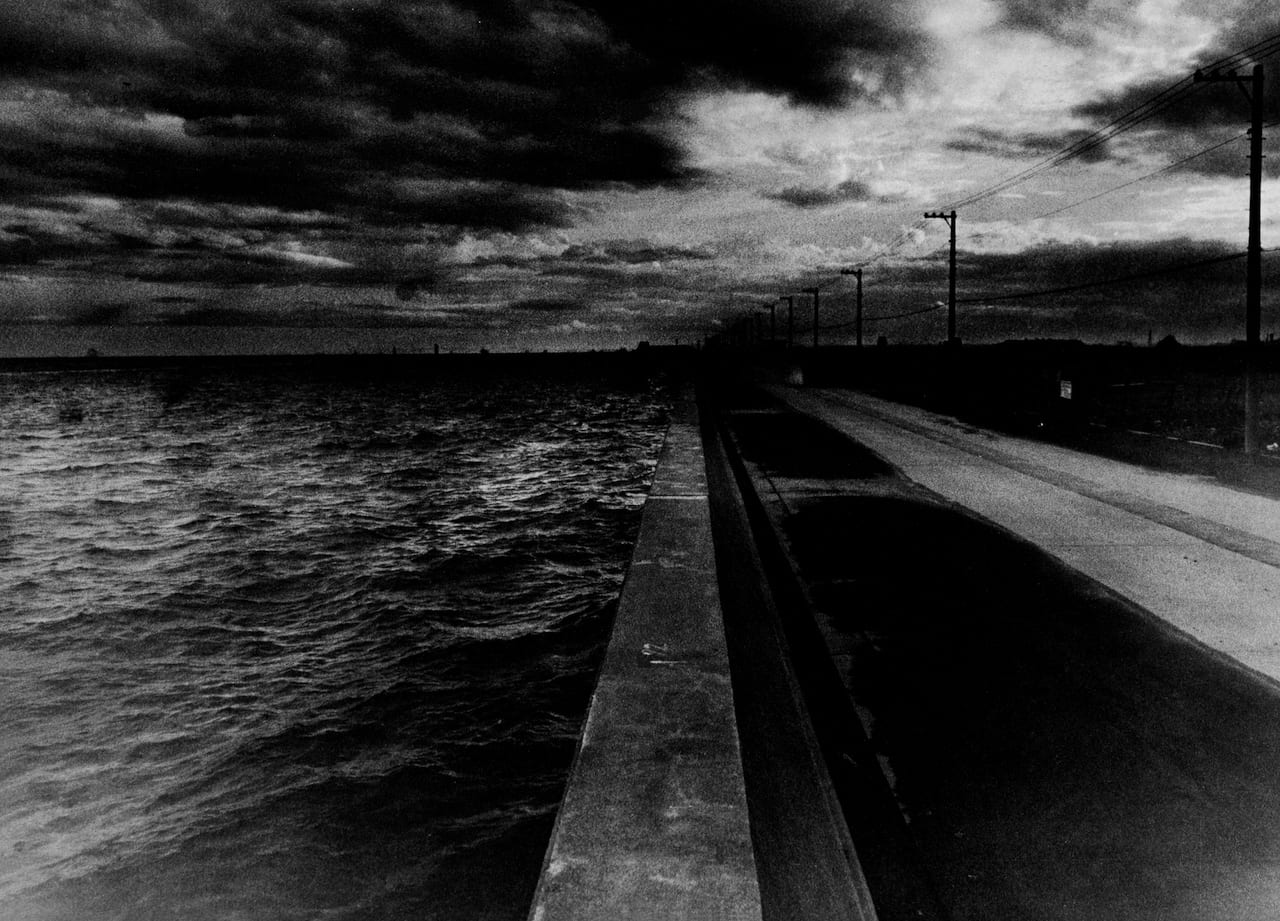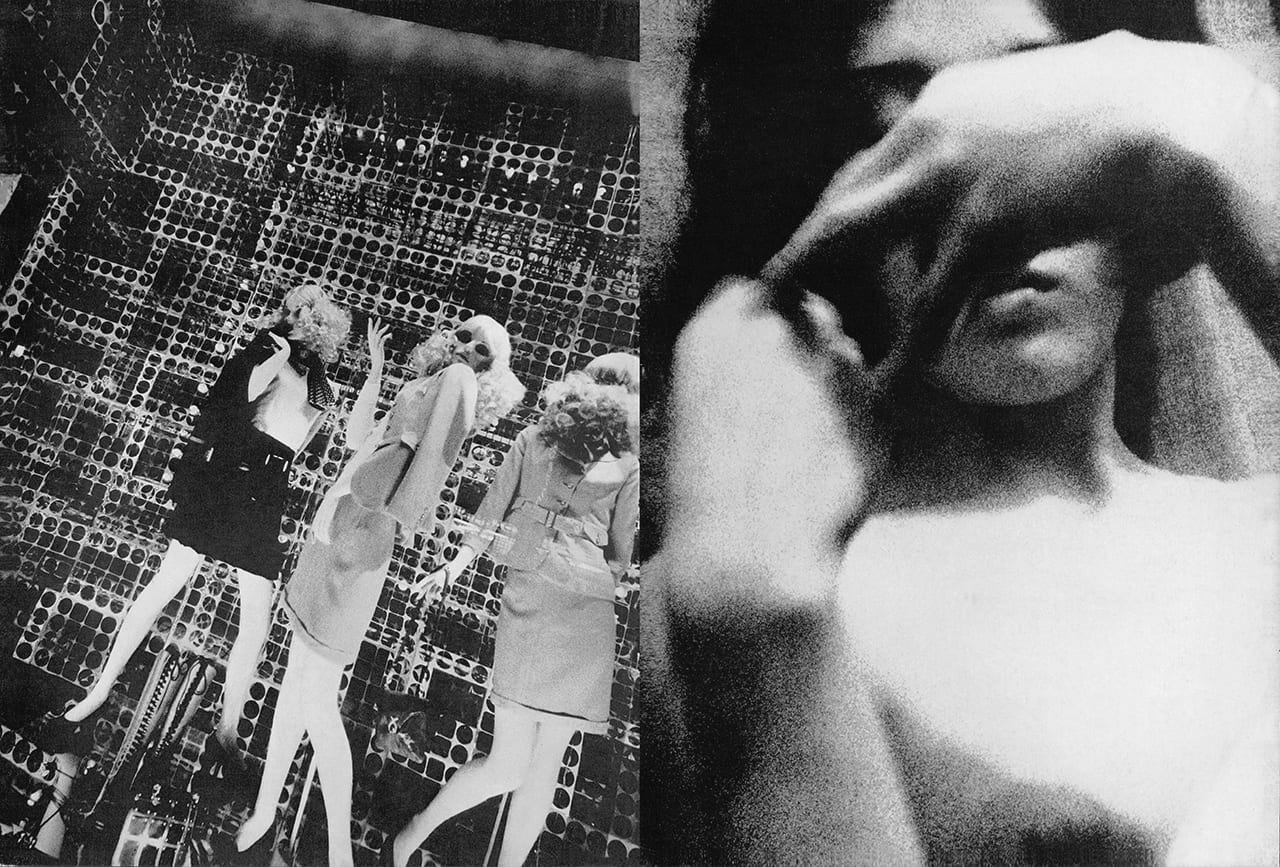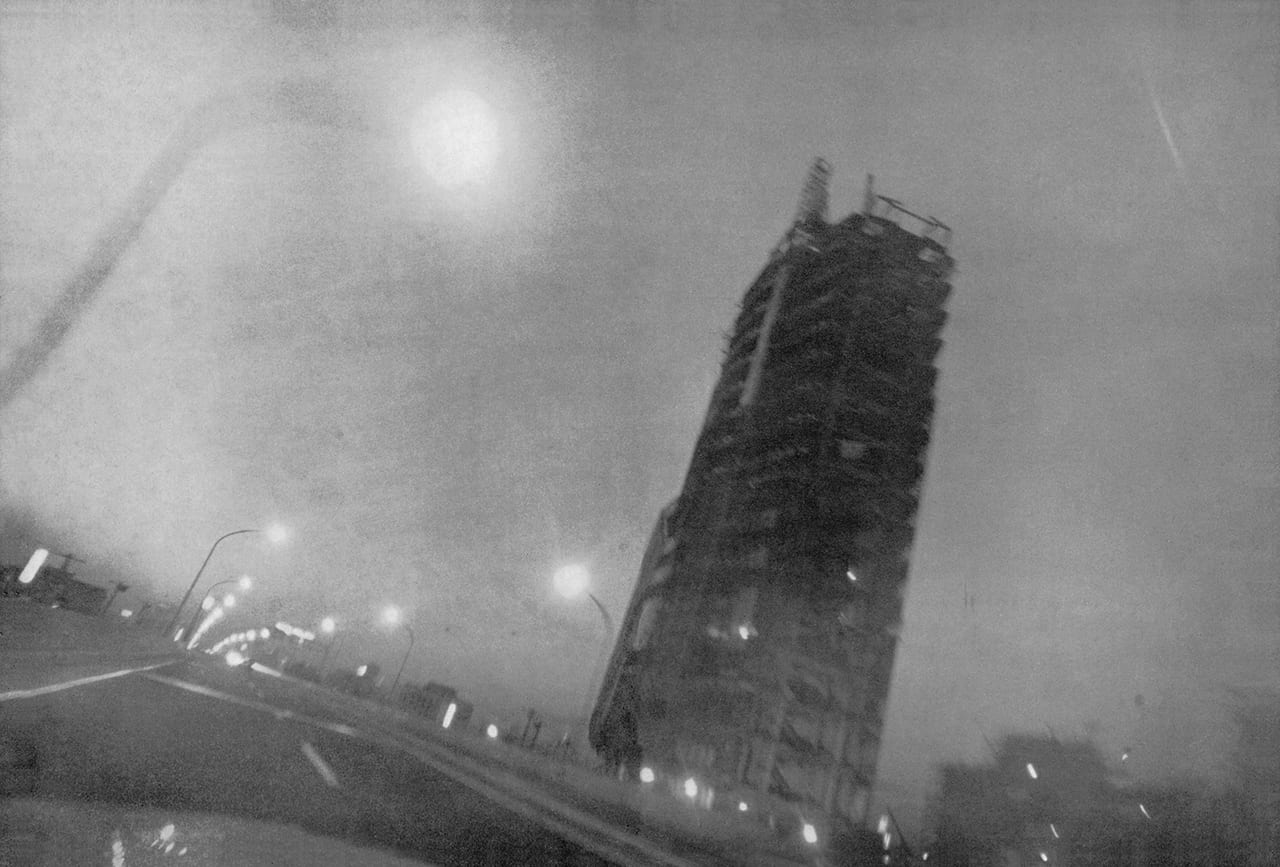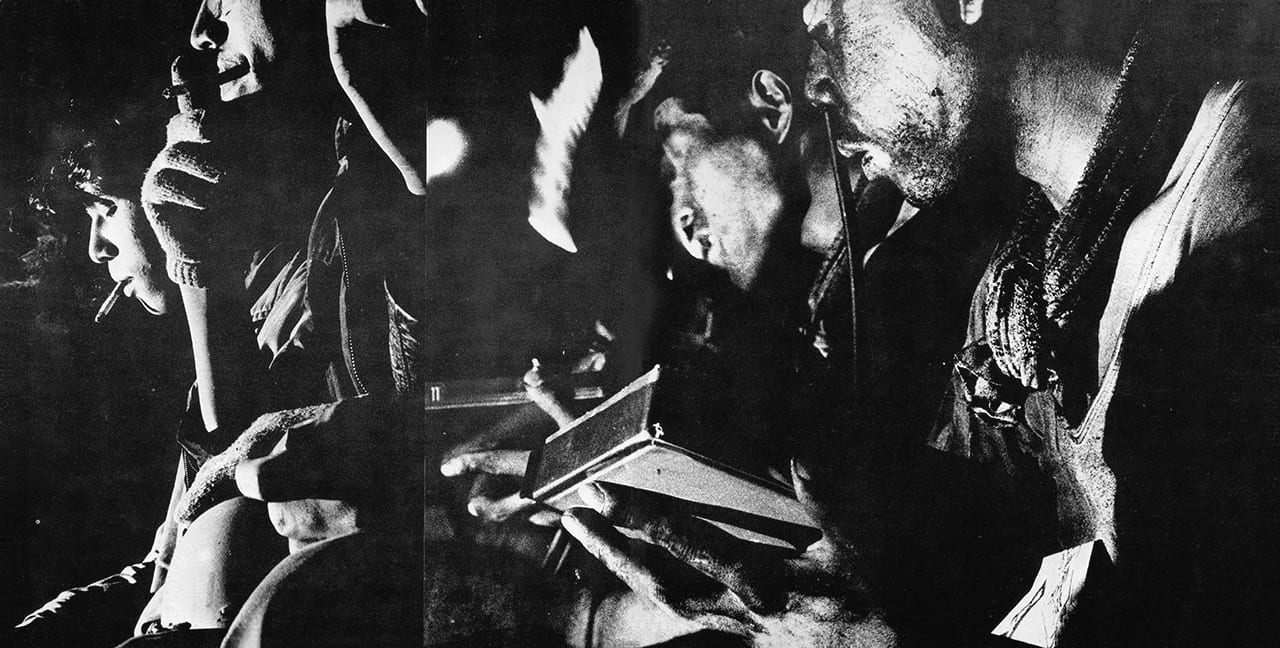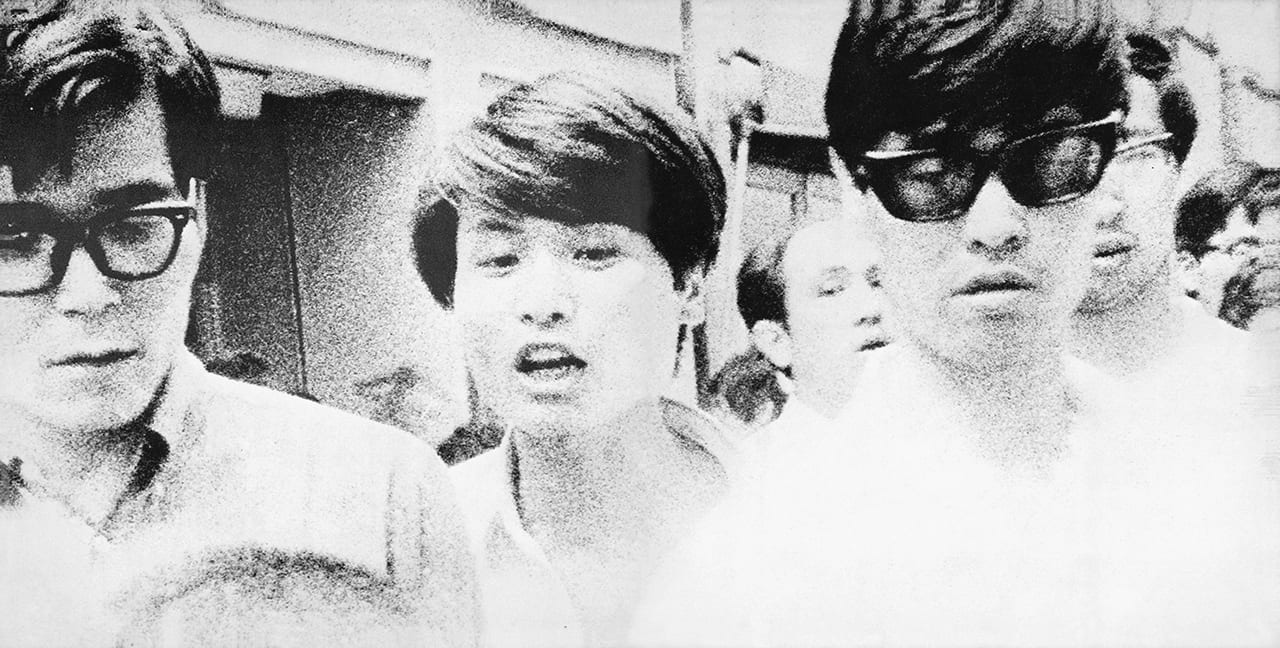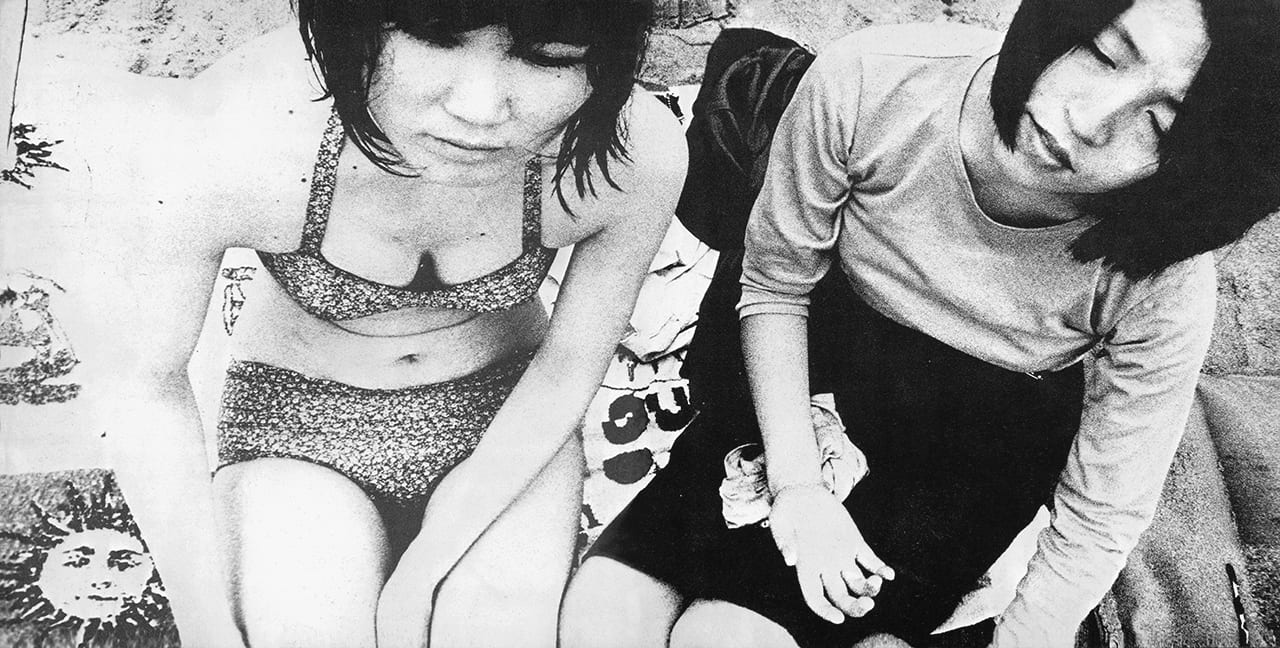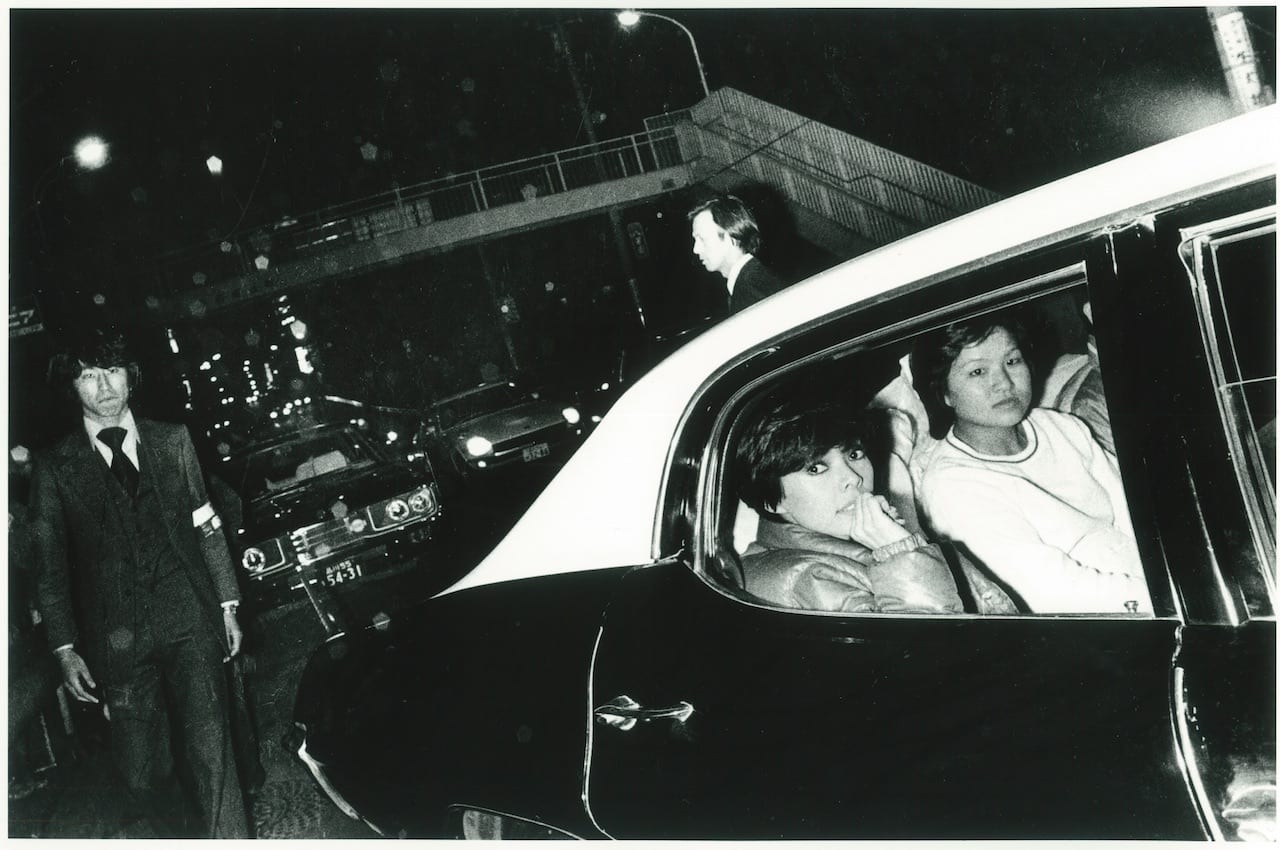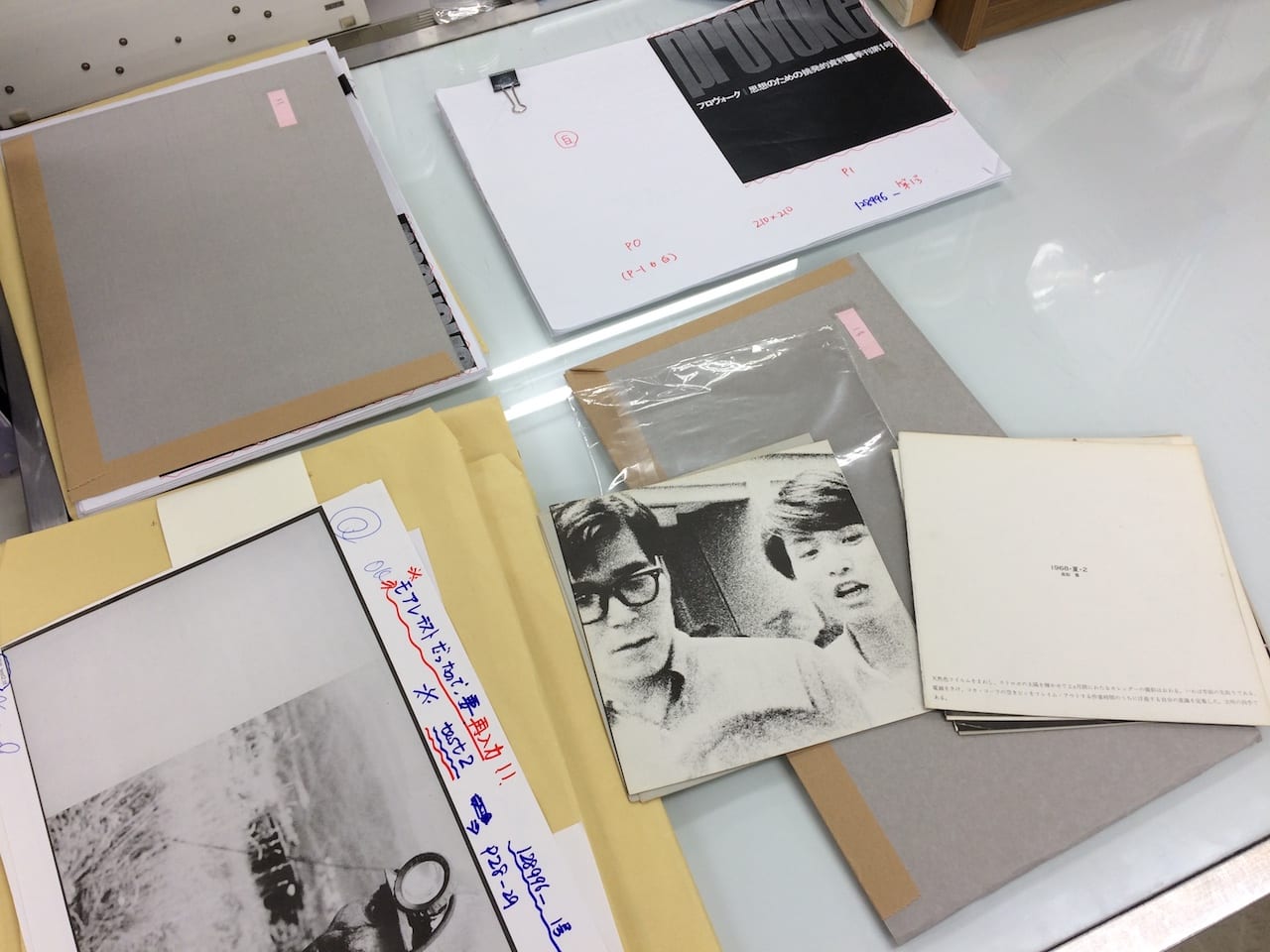“How to fill the gap between politics and art? This is both an old and a new problem,” writes Takuma Nakahira, in the afterword to PROVOKE no.1, published 50 years ago this month. Led by some of Japan’s best-known photographers and art critics – including Takuma Nakahira, Koji Taki, and iconoclast Daido Moriyama, who joined from the second issue – the magazine stemmed from the anger and discontent that they felt towards the post-war world. Though it survived only three issues, and was criticised at the time, it is now widely recognised as a ground-breaking publication in the history of contemporary Japanese photography.
The magazines were printed in 1968 and 1969, both turbulent years for politics which featured the May 1968 riots in Paris; the assassination of Martin Luther King Jr and the anti-Vietnam protests in the US; the end of the Prague Spring. In Japan, 1968 was the year that a string of violent student uprisings forced many of the top universities to close.
Running with the subtitle “provocative materials for thought”, PROVOKE shook the art world with its “are, bure, boke” (“grainy, blurry, out of focus”) black-and-white images. PROVOKE advocated independent thought, featuring photography and critical writing that sought to challenge its readers to reconsider the existing conventions of photography during a politically and ideologically revolutionary time.
Those readers were key though because, while it was highly influential with an inner-circle photographers, writers and artists, PROVOKE was not widely seen. Just 1000 copies were printed of the original issues, meaning they are now rare and very expensive – up to $20,000 for a pack of three issues – putting them out of reach for the many who would now like to read them.
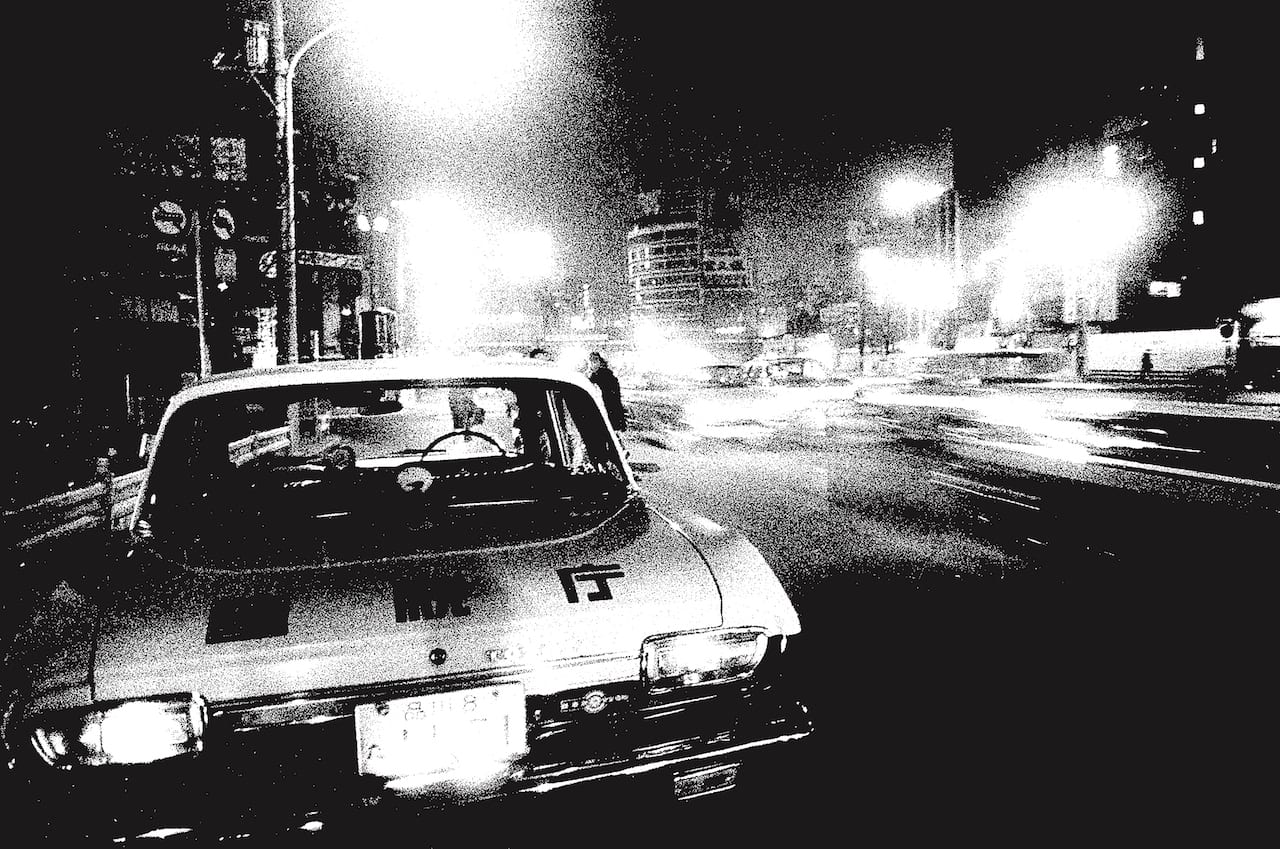
“People are highly interested in what was going on at the time,” says Amanda Ling-Ning Lo, co-founder of Nitesha, a second-hand bookstore, and now publisher, based in Tokyo. Last year, Nitesha curated a touring exhibition, The Golden Age of Japanese Photobooks, in which visitors could pick up and read the publications on display – except PROVOKE which, because of its high value, had to be kept behind glass. Noticing that visitors were intrigued, Nitesha decided to do a reprint, which turned into a careful remake.
The team at Nitesha took apart the magazines, to identify and source all of the original material. The paper-stock, cover, binding, and even the Obi fabric – a sash for traditional Japanese dresses – that was used to cover the second issue, are all identical to the materials used 50 years ago. Though the overall editorial design remains the same, they have made space for translations in Chinese and English, so that the core ideas of PROVOKE can be understood and interpreted by a wider, global audience.
As well as photography, PROVOKE also had a huge focus on writing. It printed experimental poetry, as well as philosophical, political, and critical essays. Its founding members included art critic Koji Taki and poet Takahiko Okada, as well as photographers Takuma Nakahira and Yutaka Takanashi. Because the writing in the magazine was so important to its members, Lo was mindful of the inconsistencies that can occur in translations. So she decided to keep certain words in Japanese, followed by a short description in English.
The magazine is most known for conceiving the groundbreaking style in Japanese photography, “are, bure, boke”, which translates to “grainy, blurry, out of focus”, a sharp contrast from the usual imagery in Japan at the time. “It was not just a technique,” says Kotaro Iizawa, a Japanese art historian, during his talk, Decoding Provoke, at Hong Kong International Photography Festival (HKIPF), where the first-ever exhibition on the PROVOKE era in Asia opened last week.
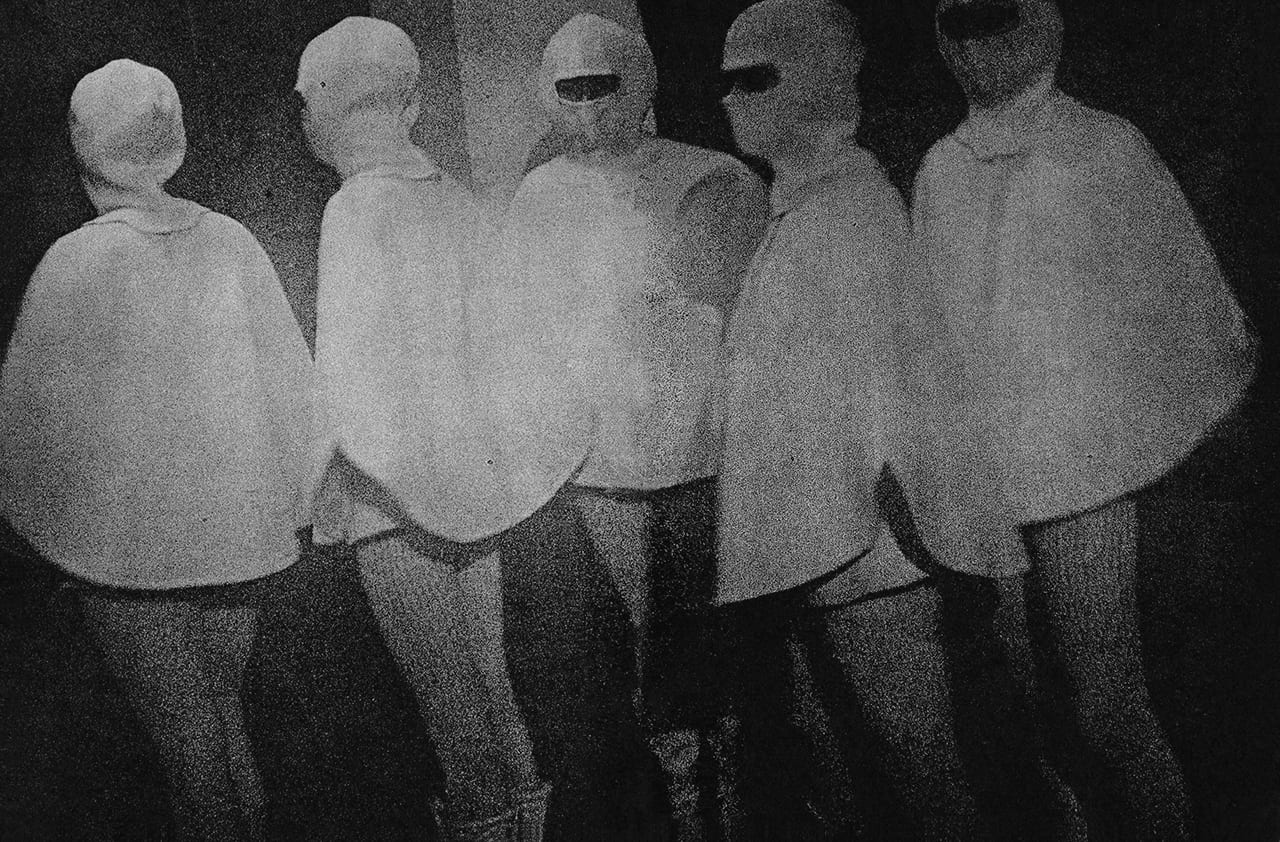
“It was a way of depicting the reality they were experiencing,” he explains, “to the photographers of PROVOKE, the real world looked exactly this way.”
Indeed, as they collectively write in the manifesto, “We photographers must go on grasping with our own eyes those fragments of reality that cannot possibly be captured with existing language, actively putting forth materials against language and against thought”.
At the time this style was not celebrated though, with many critics describing it as “dirty”. In the afterword to PROVOKE 3, Koji Taki writes, “We do not think that the photos will go that far, but at the same time, we know that there is a raw layer of meaning about the world which only the photos bring out… We have absolutely no desire to produce “good work” as interpreted by the values of the past.”
But their photographs did go far, and as Iizawa outlined in his talk, the magazine’s groundbreaking influence can now be seen on many levels. Firstly, he says, through its writing PROVOKE raised the level and reach of photographic criticism in Japan, because they were “consistent with their intention to explore photography and language interactively”.
“Daido Moriyama and Yutaka Takanashi were photographers who could speak accurately and eloquently about their own photographs,” he explains. “Photographers who were able to express themselves so clearly, in response to questions like ‘What is photography?’ and ‘What can photography do?’ were a rarity at the time.”
Iizawa also points out that the team behind PROVOKE were pioneers in moving the aesthetics of Japanese photography away from the then-popular commercial and documentary styles. They were concerned with creating an aesthetic from within; an art that was not just photography, he says, but “a record of the private relationship between themselves and the world, the self and the other”, he says.
This year Hong Kong International Photo Festival, now in its fifth edition, is curated around the theme PROVOKE & Beyond. The main exhibition, Provoke the age, the acts: 50 years’ quest for a language to come, features work by 12 artists, mostly from the 1960s and 1970s, including Daido Moriyama, Shomei Tomatsu, Eikoh Hosoe and Issei Suda. A separate exhibition curated by Huang Yaji spotlights the work of Takuma Nakahira in a solo show.
Although PROVOKE folded in 1969, its members went on to produce work that is now globally celebrated. Daido Moriyama, Takuma Nakahira, and Yutaka Takanashi each published a photobook in the 1970s, which together critic Gerry Badger has described as: “not only three of the best Japanese photobooks ever published, but three of the best photobooks ever published anywhere”.
“The seeds laid by PROVOKE have germinated in so many places, and its roots have expanded so widely,” Iizawa concludes,.“We must acknowledge how the spirit of PROVOKE has been handed down to next generation of photographers. Not only in Japan, but also in the history of photography in the world.”
PROVOKE: Provocative Materials for Thought, Complete Reprint of 3 Volumes, is available to purchase for JPY 8,640 from www.nitesha.com
PROVOKE & Beyond at Hong Kong International Photography Festival will run till 02 December hkipf.org.hk
